Gorilla Tourism is a type of Tourism that involves visiting gorillas in the Wild or natural habitat. This type of Tourism is very popular in East, Central and West Africa. Uganda, Rwanda and the Democratic Republic of Congo are the Top destinations for gorilla tourism. How did it all begin? Interest in Gorilla Tourism and Conservation started in 1902 when a German captain known as Robert Von Beringe discovered mountain gorillas in an area now known as Rwanda.
Later in 1925, Carl Akeley a naturalist from America convinced King Albert of Belgium to create the Albert national park (Now Known as Virunga National Park). Albert National Park became the very first in Africa. It was in 1959 that an American zoologist called George Schaller the first major study of 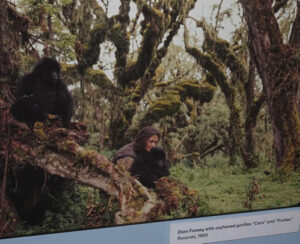 mountain gorillas in the Albert national park. When the Belgian Congo became Zaire after Independence in 1960, the Albert National Park was divided into two – the Virunga national park of Congo and the Volcanoes National Park in Rwanda.
mountain gorillas in the Albert national park. When the Belgian Congo became Zaire after Independence in 1960, the Albert National Park was divided into two – the Virunga national park of Congo and the Volcanoes National Park in Rwanda.
A major turning point in gorilla tourism, research and conservation occurred in the year of 1967. On invitation by Dr. Leakey, an American zoologist known as Dian Fossey begun a comprehensive study of mountain gorillas in the Volcanoes National Park. Her studies were a major success with major breakthroughs in how to habituate gorillas. Gorilla habituation refers to a process in which wild gorillas are trained be comfortable with humans in their presence.
In 1973, the Rwanda office of tourism and national parks was created to formulate new laws governing activities in the national parks. Despite effects to protect wildlife, poaching and pet trade in young gorillas continued from 1970 to 1980. Dian Fossey fought heard to protect the gorillas and discouraged gorilla tourism. According to Fossey, gorillas needed to be left alone and undisturbed by humans. Pet trade and killing of entire gorilla families to capture their young sparked off international concern and urgency to protect and conserve the wild gorillas. Digit, a favorite gorilla of Dian Fossey was killed too. The killing of gorilla groups left in the wild made the government in Rwanda and other conservationists realize that gorilla tourism was an important way of serving them. The benefits of gorilla trekking would force communities living close to the parks to protect the primates and even report poachers.
Gorilla Trekking in the Volcanoes National Park of Rwanda was first introduced in 1973 but for a short time and then suspended because there was no much experience or studies on the outcomes of human-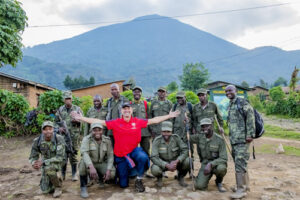 gorilla contact. There was also no clear rules for gorilla trekking in place at the time. In 1979, there was a major mountain gorilla project which became a turning point in the conservation of gorillas. The Rwandan government and a group of wildlife support organizations had a convention where they agreed to introduce gorilla tourism, community education and anti-poaching campaigns to encourage the conservation of the gorillas. These organizations were the African wildlife leadership foundation (A. W. L. F) which has today become African wildlife foundation (A. W. F) and the Flora and Fauna Preservation Society (F. F. P. S). The ideas discussed in the convention later helped to create tourism related jobs and revenues which encouraged the local people and leaders to join hands in the conservation of gorillas.
gorilla contact. There was also no clear rules for gorilla trekking in place at the time. In 1979, there was a major mountain gorilla project which became a turning point in the conservation of gorillas. The Rwandan government and a group of wildlife support organizations had a convention where they agreed to introduce gorilla tourism, community education and anti-poaching campaigns to encourage the conservation of the gorillas. These organizations were the African wildlife leadership foundation (A. W. L. F) which has today become African wildlife foundation (A. W. F) and the Flora and Fauna Preservation Society (F. F. P. S). The ideas discussed in the convention later helped to create tourism related jobs and revenues which encouraged the local people and leaders to join hands in the conservation of gorillas.
How Gorilla Tourism Started
Gorilla Tourism started with the selection of two gorilla groups for habituation. The intention was to make them used to human presence before allowing in tourists. The groups selected were group 11 and group 13 which were both near the Karisoke center. Group 11 had a very calm silverback called Stilgar. 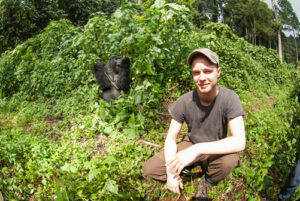 Other gorilla families were not considered for habituation at that time because they lived very far away from the starting point. In addition to that, some gorilla groups were unapproachable because of unfriendly silverbacks. The first experimental trekking was done by two groups of people. The first group were residents of Rwanda in October 1979 while the second group who were non-resident tourists. The initial trekking expeditions were limited to only 6 people per family who had only one hour to be with the gorillas. This was to avoid stressing the gorillas by prolonged human exposure. The trek costed 20 US dollars per person at the time. This initial trek also gave way for the formulation and Introduction of the rules for gorilla trekking. In a short period, many tourists were recorded visiting at the Volcanoes National Park for gorilla trekking. This led to improvements in the quality and number of accommodation facilities close to the park with lots of jobs created for the locals as trekking guides, patrolling guides, porters among others.
Other gorilla families were not considered for habituation at that time because they lived very far away from the starting point. In addition to that, some gorilla groups were unapproachable because of unfriendly silverbacks. The first experimental trekking was done by two groups of people. The first group were residents of Rwanda in October 1979 while the second group who were non-resident tourists. The initial trekking expeditions were limited to only 6 people per family who had only one hour to be with the gorillas. This was to avoid stressing the gorillas by prolonged human exposure. The trek costed 20 US dollars per person at the time. This initial trek also gave way for the formulation and Introduction of the rules for gorilla trekking. In a short period, many tourists were recorded visiting at the Volcanoes National Park for gorilla trekking. This led to improvements in the quality and number of accommodation facilities close to the park with lots of jobs created for the locals as trekking guides, patrolling guides, porters among others.
On the 27th of December 1985, Dian Fossey was found murdered in her cabin at Karisoke research center. She was laid to rest next to Digit her beloved silverback in the cemetery she had created for the gorillas at Karisoke. To this day, her death has still remained a mystery. After her death, a population census was conducted for the mountain gorillas in the year of 1989 which revealed the existence of about 324 gorillas in the Virunga conservation area and about 320 gorillas in the Bwindi impenetrable national park hence making a total of 644 gorilla individuals.
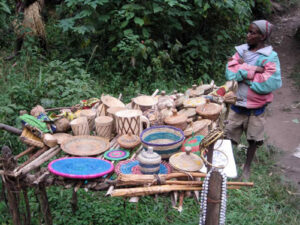 The year of 1992 saw ‘Mrithi’ a male silverback gorilla from group 13 (One of the first two habituated gorilla families) killed by poachers. As though his death was not enough, about 18 to 22 more gorillas were killed during the 1994 civil war of Rwanda. This massive killing of the gorillas during the 1994 genocide sadly brought an end to gorilla tourism. The volcanoes national park was eventually re-opened for gorilla tourism in 1999 by the Rwanda office of tourism and national parks with the cost of gorilla trekking permits going for 250 US dollars. The gorilla permit fee has been increased over the years and is currently 1500 US dollars per person.
The year of 1992 saw ‘Mrithi’ a male silverback gorilla from group 13 (One of the first two habituated gorilla families) killed by poachers. As though his death was not enough, about 18 to 22 more gorillas were killed during the 1994 civil war of Rwanda. This massive killing of the gorillas during the 1994 genocide sadly brought an end to gorilla tourism. The volcanoes national park was eventually re-opened for gorilla tourism in 1999 by the Rwanda office of tourism and national parks with the cost of gorilla trekking permits going for 250 US dollars. The gorilla permit fee has been increased over the years and is currently 1500 US dollars per person.
Gorilla Tourism in Uganda
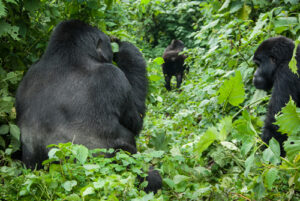 Gorilla tourism in Uganda began in 1991 when the government gazetted Bwindi impenetrable national park for mountain gorilla conservation. The Uganda tourism industry took long to develop because tourism activities discouraged by the then president Iddi Amin in the 1970’s. Amin instead considered the national parks as excellent hunting grounds for wild animals. The country also went into a civil war in the 80’s until 1986 when the National resistance army (NRA) emerged victorious and captured power in Kampala. This change of regime led to the restoration of peace and order within the country and creation of new public institutions in addition to formulation of new laws. In the 90’s Uganda was now ready to join hands with the other countries where gorillas were being conserved.
Gorilla tourism in Uganda began in 1991 when the government gazetted Bwindi impenetrable national park for mountain gorilla conservation. The Uganda tourism industry took long to develop because tourism activities discouraged by the then president Iddi Amin in the 1970’s. Amin instead considered the national parks as excellent hunting grounds for wild animals. The country also went into a civil war in the 80’s until 1986 when the National resistance army (NRA) emerged victorious and captured power in Kampala. This change of regime led to the restoration of peace and order within the country and creation of new public institutions in addition to formulation of new laws. In the 90’s Uganda was now ready to join hands with the other countries where gorillas were being conserved.
\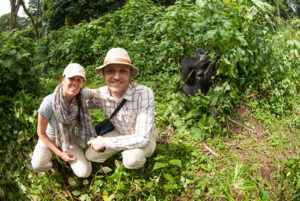 The Mubare gorilla family was the first to be habituated in Uganda. This was easily done because the silverback ‘Ruhondeza’ proved to be of good character and very receptive towards humans. The Mubare family was first opened to the public for gorilla tourism in the year of 1993. By the year of 2004, the number of habituated gorilla families in Uganda had grown to 4 families. These included the Mubare family, the Rushegura family, Habinanja family and Nkuringo family. The gorilla permits costed 360 US dollars per person at the time. By the year of 2012, there were already 9 habituated at the Bwindi impenetrable national park with two new trekking points opened at Ruhija which is in the central part of the park and the Rushaga sector at the south eastern part of the park. Gorilla permits are currently sold at 700 US dollars.
The Mubare gorilla family was the first to be habituated in Uganda. This was easily done because the silverback ‘Ruhondeza’ proved to be of good character and very receptive towards humans. The Mubare family was first opened to the public for gorilla tourism in the year of 1993. By the year of 2004, the number of habituated gorilla families in Uganda had grown to 4 families. These included the Mubare family, the Rushegura family, Habinanja family and Nkuringo family. The gorilla permits costed 360 US dollars per person at the time. By the year of 2012, there were already 9 habituated at the Bwindi impenetrable national park with two new trekking points opened at Ruhija which is in the central part of the park and the Rushaga sector at the south eastern part of the park. Gorilla permits are currently sold at 700 US dollars.
Importance of Gorilla Tourism
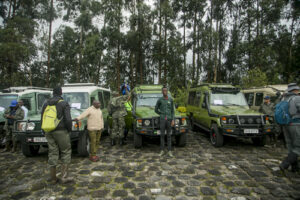 Gorilla tourism has been and it is still of great importance to the countries and local communities where the primates are found in many ways: The money generated from gorilla trekking permits has made it possible to finance conservation activities including protection of the national parks. Some of the money generated from permits is used for paying the salaries of park authorities, paying the patrol team who ensure that there are no intruders or poachers within the park. The regular presence of visitors in and around the parks have helped prevent poachers whose aim is not to conserve but instead destroy the wildlife. Additionally, resources generated from gorilla tourism has enabled the park authorities to do proper monitoring to identify new births, new deaths and any possible health challenges.
Gorilla tourism has been and it is still of great importance to the countries and local communities where the primates are found in many ways: The money generated from gorilla trekking permits has made it possible to finance conservation activities including protection of the national parks. Some of the money generated from permits is used for paying the salaries of park authorities, paying the patrol team who ensure that there are no intruders or poachers within the park. The regular presence of visitors in and around the parks have helped prevent poachers whose aim is not to conserve but instead destroy the wildlife. Additionally, resources generated from gorilla tourism has enabled the park authorities to do proper monitoring to identify new births, new deaths and any possible health challenges.
The revenue generated from gorilla tourism has been channeled into the establishment and development of other government sectors such as health and education among others. The local communities benefit 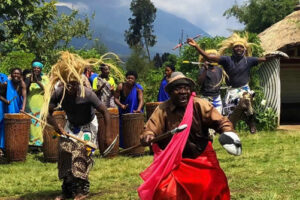 when better roads, health facilities and schools are built with money raised through gorilla tourism. The money generated from gorilla trekking permits has also enabled the governments to pay Researchers, veterinary doctors and other scientists who check on the overall well-being of the primates from time to time.
when better roads, health facilities and schools are built with money raised through gorilla tourism. The money generated from gorilla trekking permits has also enabled the governments to pay Researchers, veterinary doctors and other scientists who check on the overall well-being of the primates from time to time.
Tourists who visit for gorilla trekking support the local communities by staying in their lodges, participating in local activities, eating from local food establishments, buying crafts and souvenirs. This has greatly helped to improve the livelihoods and quality of life of the people.
Gorilla Tourism has its drawbacks
Too much exposure to humans and flash lights from cameras has made some gorilla groups lose their natural shyness towards people. This has made them bold to the extent of going out and raiding farms in the surrounding communities. Habituated gorillas can easily be killed by poachers since they no longer flee from humans. Gorillas are highly susceptible to human diseases like cough and cold among others. This is because they possess about 95% of the human DNA. Frequent encounters with humans places them at high risks of catching their diseases.
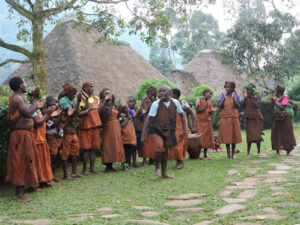 Gorilla tourism has also brought about population pressure in the areas around the national parks. More people migrate to areas close to the gorilla parks with hopes of getting good tourism- related opportunities. When they don’t succeed, they end up frustrated and begin to hinder and undermine the gorilla conservation measures.
Gorilla tourism has also brought about population pressure in the areas around the national parks. More people migrate to areas close to the gorilla parks with hopes of getting good tourism- related opportunities. When they don’t succeed, they end up frustrated and begin to hinder and undermine the gorilla conservation measures.
Gorilla tourism has led to the loss of forests, vegetation and community land. This is so because some people are illegally setting up accommodation facilities in protected land. Some people like the Batwa pygmies have been displaced because the government gazetted all forests in Bwindi and Mgahinga. The Batwa people had lived undisturbed in the forests as hunters and gatherers of wild fruits for over 5000 years. They have found it almost impossible to adapt to a life outside the forest despite efforts by the governments to rehabilitate them.
In conclusion, gorilla tourism in Africa and particularly in the countries of Rwanda, Uganda and Congo has come a long way since the days of Dian Fossey. It was found that the best way to raise money for gorilla conservation in these developing countries was to allow this form of tourism. The money from gorilla tourism has been used for conservation efforts, building infrastructure and providing opportunities for communities living close to the gorillas. Without tourism, the gorillas would be left alone in the wild and at the mercy of poachers.

